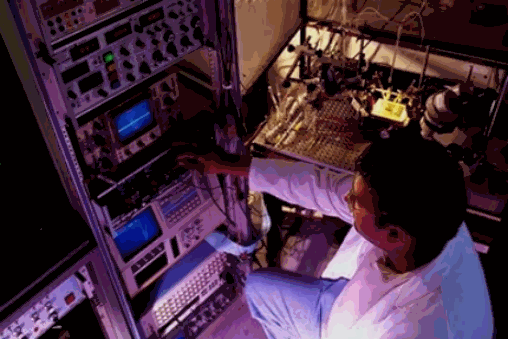(24hoursnews ) A picture of the web in 2030, and it is very powerful - and very smart - indeed
In the heart of Silicon Valley, at what is referred to, somewhat romantically, as the 'web's edge', something is stirring. 
A new type of internet is being imagined, far more powerful that the one which lets you link up with your friends or watch a video uploaded by a stranger.
Facebook, YouTube and the other social networks and blogs that fall within the scope of 'Web 2.0' may be beginning to penetrate the mainstream, but to those whose Cassandra-like vision lets them see the web in 2020 and beyond, they are but a pixel in a much larger picture.
In a little over a decade, according to the engineers building the internet of tomorrow, the web will be able to connect every aspect of our digital lives - be it a website, an e-mail, or a file on our PC - to every other aspect. It will know, for instance, when you are typing an e-mail, what the subject of the e-mail is, and be able to suggest websites and books as well as documents, photos and videos you have saved that may be relevant to that topic
It will be achieve this by virtue of the inherent 'intelligence' in the underlying architecture of the internet, they say. In other words, the web is becoming smart.
Nova Spivack is an evangelist of the next phase of the web's development - what Silicon Valley, with its expansionist zeal, has taken to calling Web 3.0, or 'the semantic web'.
Broadly speaking, Mr Spivack says, Web 3.0 refers to the attempt by technologists to overhaul radically the basic platform of the internet so that it 'understands' the near infinite pieces of information that reside on it and draws connections between them.
If Web 2.0 was all about harnessing the collective intelligence of crowds to give information a value - lots of people liked this story so you might too (Digg.com), people who like Madonna also like this artist (last.fm), lots of people linked to this site so that makes it the most relevant (Google's basic PageRank algorithm) - then Web 3.0 is about giving the internet itself a brain.
For those still a bit lost, Mr Spivack, the founder of Radar Networks, a leading Web 3.0 company, says it's useful to think about the web's development in ten-year cycles.
"We have had the first decade of the web, or Web 1.0," he says, which was about the development of the basic platform of the internet and the ability to make huge amounts of information widely accessible, "and we're nearing the end of the second decade - Web 2.0 - which was all about the user interface" and enabling users to connect with one another.
"Now we're about to enter the third decade - Web 3.0 - which is about making the web much smarter."
Each decade in turn corresponds to an engineering focus on either 'the front end' or 'back end' of the web. Web 1.0 was a back-end decade, focusing on the web's basic platform, its link structure and navigation system. Web 2.0 was front end, with a heavy focus on users and usability, clean-looking sites, and people making connections with one another.
In Web 3.0, the emphasis will revert to the back end, with a renewal of the web's key index - the essential data that is catalogued by search engines like Google. That in turn, Mr Spivack says, will make way for Web 4.0, another 'front-end decade', only with more advanced programs than the likes of Facebook.
A prime example of a Web 3.0 technology is 'natural-language search', which refers to the ability of search engines to answer full questions such as 'Which US Presidents died of disease?'. In some cases, the sites that appear in the results do not reference the original search terms, reflecting the fact that the web knows, for instance, that Reagan was a US President, and that Alzheimer's is a disease.
"Our engine reads every page of the web sentence by sentence and returns results by drawing on a general knowledge of language and what specific concepts in the world mean, and their relationship with one another," said Barney Pell, chief executive of Powerset, which is developing natural-language technology. The firm, based at the prestigious Palo Alto Research Centre, in California, is sometimes talked about as a Google-killer, should its offering - which is not yet widely available - become popular.
It's not just search that will be overhauled in the web of the future, however. One of the recurrent themes in the presentations at the Web 2.0 Summit in San Francisco was 'open platforms', the idea that a website or device, like a mobile phone, should be able to accommodate whichever features or applications its user wants. Think of the iPhone as a folder into which an owner could 'drag and drop' any application - a weather forecaster, an e-mail service - without Apple having to approve such an action.
Some of the world's largest technology companies - Nokia, Apple and MySpace - all made announcements embracing the idea of open platforms, suggesting that the web will become a place where much more mixing and matching of different services will be permitted.
Alongside this will come tmore mature virtual worlds, or what Silicon Valley's faithful - perhaps to get away from connotations of the computer game - have started referring to as 'immersive environments'.
"The web is going to be a much more immersive, a much more multi-dimensional environment," said John Doerr, one of the founding board members at Google and a partner at Kleiner Perkins Caufield & Byers, which invests heavily in the tech sector.
Mr Doerr's presentation touched on a range of areas that would be affected by the web, in particular green technologies and the energy sector, as well as disease therapy, and he gave stark warning to any firm that was not willing to embrace emerging trends. "In any real revolution there are winners and losers. The internet wasn't some kind of 'kum ba ya' thing," he said.
When the time came to pack up the projects and exchange the last business cards, there was a sense - as there was seven years ago - that Silicon Valley was riding a wave of seemingly limitless investor confidence, begging an obvious question.
"Are we officially in a bubble yet?" one of the conference moderators asked, repeatedly.
No one was willing to answer. In the meantime, the vast sums of money to be made and the new services to change people's lives, radically and everywhere, were both things to be celebrated.


 According to Dr John,
According to Dr John,













 Scientists Generate Powerful Antimatter Ray
Scientists Generate Powerful Antimatter Ray

